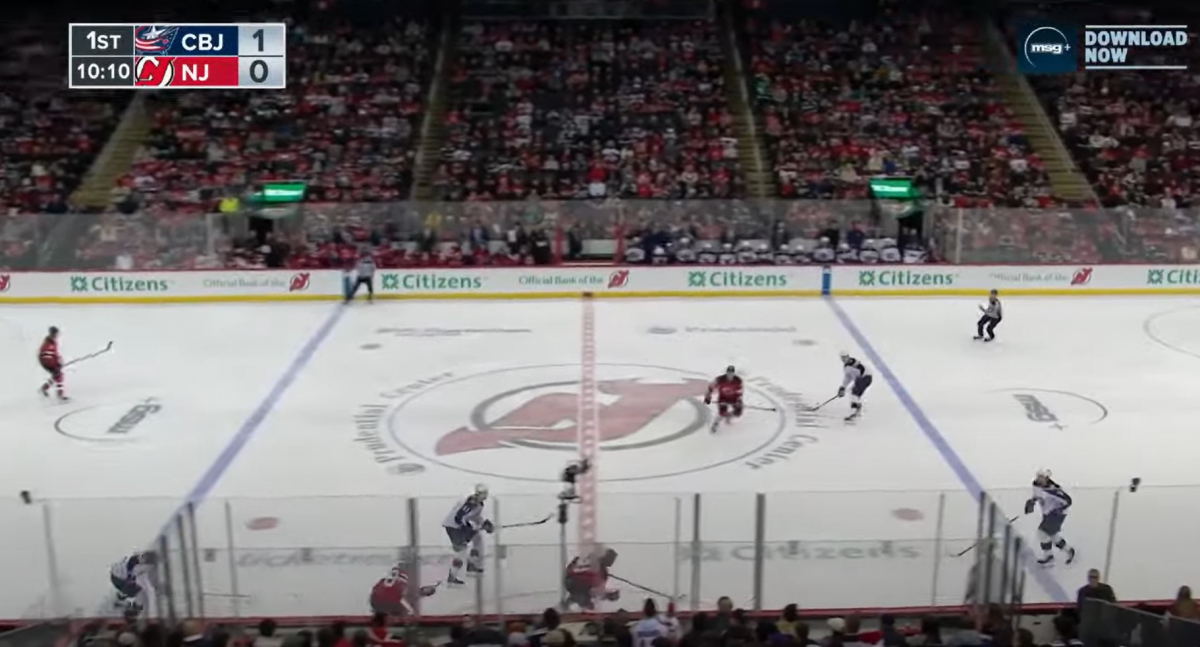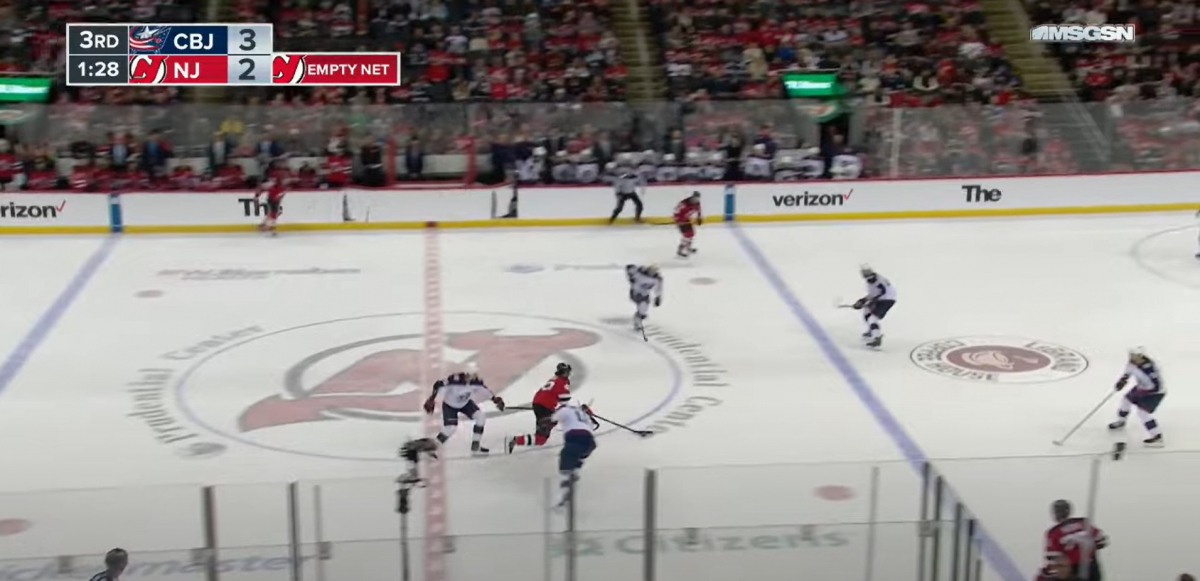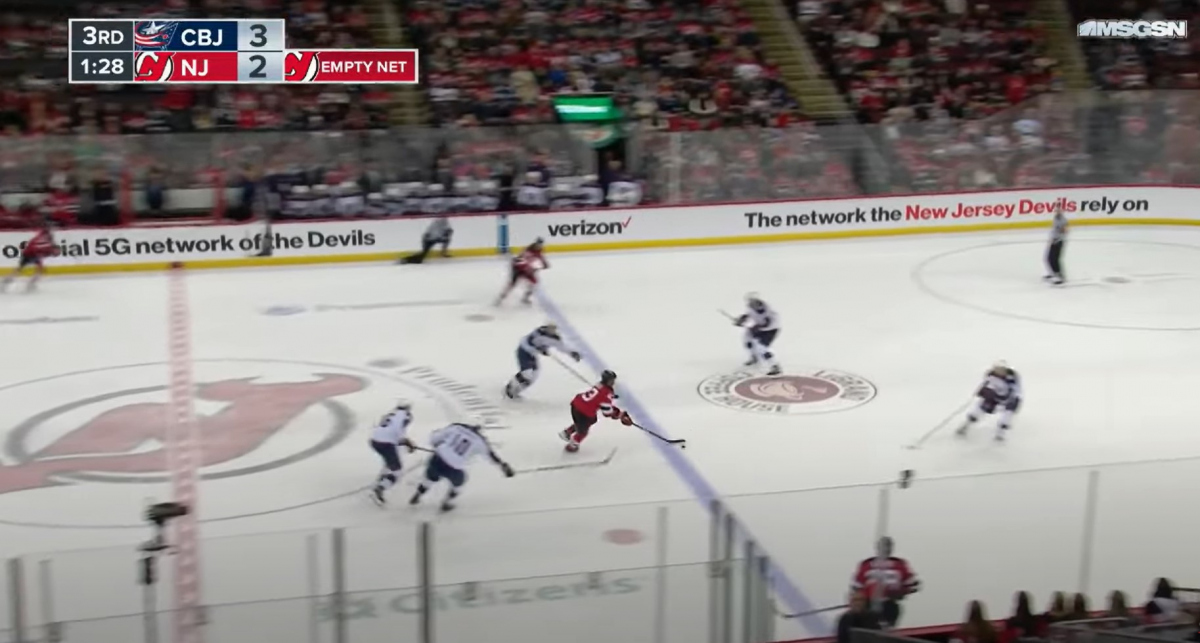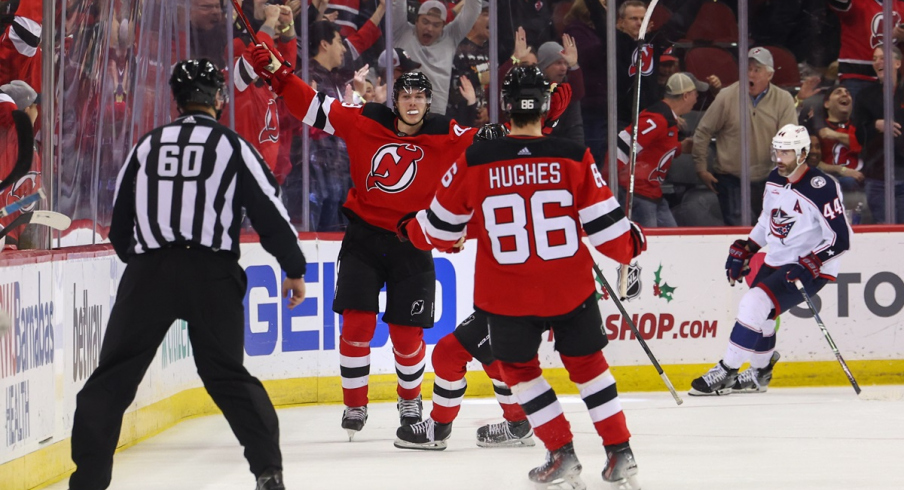The Columbus Blue Jackets suffered a familiar loss in Wednesday's 4-3 overtime loss to the New Jersey Devils, twice surrendering a third-period lead.
Today, instead of focusing on the team's obvious inability to hold a lead due to mental lapses, I want to discuss tactics. Of the four goals the Blue Jackets surrendered, two came off rush events. The Devils are one of the best transition teams in the NHL, led by superstar Jack Hughes. Surely, the Blue Jackets coaching staff would have emphasized the Devils' rush tactics coming into the game, as that is the team's obvious strength, and offered words of encouragement about playing with a tight gap, no?
So, what happened on two different equalizing goals? Let's check the tape:
Ondrej Palat Rush Goal
A hallmark of modern defending is playing with a 'tight gap', meaning that, even when an attacking player is coming with speed, the defensive player is within striking distance/stick length of the player, and not simply retreating to the goal.
But on this first goal by the New Jersey Devils, we see Dawson Mercer able to skate the entire length of the natural zone without ANY pressure - either in terms of a gap or from a backcheck. See the below freezeframe to see Ivan Provorov already two to three stick lengths apart, where conventional teaching is that there should be one stick-length difference by the time the attacking player reaches the blue line. While Provorov is mostly to blame, it's worth noting that a defenseman's gap is much easier to maintain when there is obvious back pressure. Here, Adam Fantilli is more focused on the third Devils forward than closing on Mercer.

A nice three-way passing play exposes Fantilli, and Ondrej Palat is the beneficiary of a shot in the most optimal shooting zone on the ice. He makes no mistake.
It is worth noting that this goal came right after an expiring power play, meaning the players were towards the end of their shift against a fresher Devils team. That could explain why Provorov was unable to maintain a gap, or why Fantilli was manipulated with ease. Still, a preventable goal.
Luke Hughes Rush Goal
Here, the Blue Jackets are holding a late third-period lead. The team is in the midst of a line change, and the Devils, with an empty-net, have full possession of the puck behind their net. Instead of their typical 1-2-2 forecheck that sees the first forechecker attacking in the offensive zone, the team is back half a zone. By the time the first forward gets a stick on Luke Hughes, he's at full speed and at the red line.

Hughes easily splits the two forecheckers and is completely uncontested as he enters the Blue Jackets zone. Again, look at how much space Provorov concedes on the entry.

Hughes, with nothing but time and space, is basically filtered by the five Blue Jackets players to the most dangerous place on the ice. Of course, he scores and sends the game to overtime.
As I'm writing this, I wonder if the mental woes that continually prevent the team from playing with the proper attitude to close out games have become blurred with the very tactics they're being taught. Is Provorov's awful gap a feature or a bug? Is it a mistake, or is that the plan?
The Devils came into the game knowing they could come back against the Blue Jackets - everyone can, it seems. But the Blue Jackets did themselves no favors by allowing their opposition's most dangerous players with time and space to make plays.
